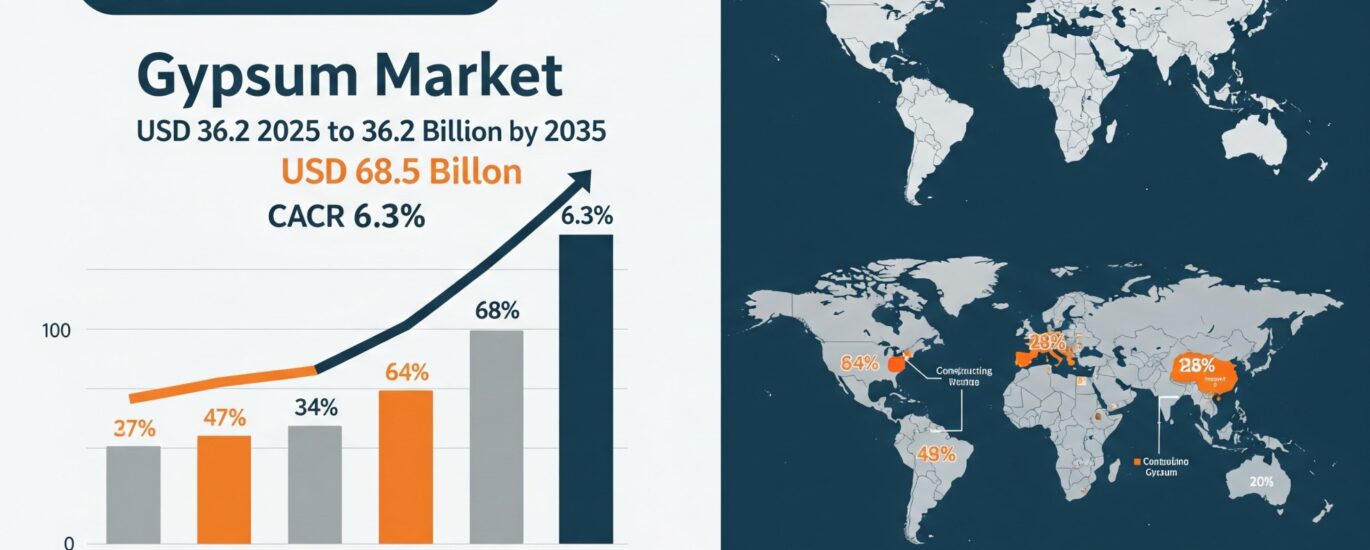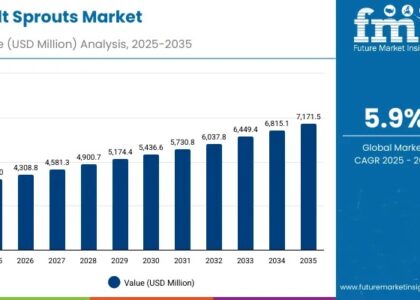The Gypsum Market has long been associated with its use in construction, particularly as drywall or plasterboard, and as a key component in the production of cement. However, beneath the surface of these common applications lies a wealth of untapped potential that is only beginning to gain attention. This article delves into the lesser-known yet promising uses of gypsum in green building materials and sustainable agriculture. By exploring these unique applications, this piece will shed light on how gypsum is poised to play a pivotal role in industries beyond construction.
𝐌𝐚𝐤𝐞 𝐈𝐧𝐟𝐨𝐫𝐦𝐞𝐝 𝐃𝐞𝐜𝐢𝐬𝐢𝐨𝐧𝐬 – 𝐀𝐜𝐜𝐞𝐬𝐬 𝐘𝐨𝐮𝐫 𝐒𝐚𝐦𝐩𝐥𝐞 𝐑𝐞𝐩𝐨𝐫𝐭 𝐈𝐧𝐬𝐭𝐚𝐧𝐭𝐥𝐲! https://www.futuremarketinsights.com/reports/sample/REP-GB-12417
Gypsum in Green Building Materials:
Green building materials are increasingly becoming a focal point in construction as the world moves towards more sustainable practices. Gypsum, often overlooked in favor of more well-known eco-friendly materials like bamboo or recycled steel, is making its mark as an essential component of green building solutions. One of the most notable trends is the integration of gypsum into energy-efficient wall panels that contribute to a building’s insulation properties. This innovation is especially important in regions where energy conservation is a top priority. Gypsum, when combined with other materials such as cellulose or expanded polystyrene, forms highly effective thermal insulation boards that help regulate indoor temperatures, reducing the need for artificial heating and cooling.
The environmental benefits of gypsum as a green building material are particularly evident when considering its lifecycle. Unlike materials that require significant energy to manufacture, gypsum is relatively low-energy to produce, especially when compared to cement or steel. Furthermore, gypsum-based products, such as gypsum boards, are fully recyclable, which aligns with the growing emphasis on circular economy principles in the construction industry.
Sustainable Agriculture: The Untapped Potential of Gypsum as a Soil Amendment:
While gypsum has traditionally been used in agriculture for soil conditioning, its benefits extend far beyond the commonly understood role of improving soil structure. Gypsum is emerging as a crucial element in sustainable agricultural practices, particularly in the enhancement of soil health and the mitigation of environmental challenges.
One of the most groundbreaking applications of gypsum in agriculture is its ability to improve soil salinity. In regions where irrigation practices lead to saline soils, gypsum acts as a natural desalinizer by binding with excess sodium and displacing it from the soil particles. This process allows farmers to cultivate crops in areas where salinity would typically render the land unusable. Gypsum’s role in soil salinity reduction is particularly significant in arid regions, such as parts of the Middle East and Australia, where water scarcity and soil salinization are pressing concerns.
𝐔𝐧𝐥𝐨𝐜𝐤 𝐂𝐨𝐦𝐩𝐫𝐞𝐡𝐞𝐧𝐬𝐢𝐯𝐞 𝐌𝐚𝐫𝐤𝐞𝐭 𝐈𝐧𝐬𝐢𝐠𝐡𝐭𝐬 – 𝐄𝐱𝐩𝐥𝐨𝐫𝐞 𝐭𝐡𝐞 𝐅𝐮𝐥𝐥 𝐑𝐞𝐩𝐨𝐫𝐭 𝐍𝐨𝐰: https://www.futuremarketinsights.com/reports/gypsum-market
In addition, gypsum plays a role in enhancing nutrient availability. It supplies calcium and sulfur, essential nutrients that are often deficient in modern agricultural soils due to overuse of synthetic fertilizers. By adding gypsum to the soil, farmers can improve plant growth, increase crop yields, and reduce their reliance on chemical fertilizers, thereby contributing to more sustainable farming practices.
Gypsum and the Circular Economy:
The concept of a circular economy, where resources are continually reused and recycled, is gaining traction in industries worldwide. Gypsum fits seamlessly into this model due to its inherent recyclability. Gypsum waste from construction sites, once considered a byproduct, can now be collected, processed, and reused in the production of new gypsum products. This recycling process not only reduces the need for raw material extraction but also minimizes waste that would otherwise end up in landfills.
An example of this is the increasing trend of using recycled gypsum in the production of new drywall and plasterboard. Studies have shown that using recycled gypsum reduces energy consumption and lowers greenhouse gas emissions compared to producing new gypsum from natural resources. The integration of recycled gypsum into construction materials aligns with sustainability goals, helping the construction industry reduce its carbon footprint.
Challenges and the Future of Gypsum:
Despite its many advantages, the gypsum industry faces several challenges. One of the most pressing concerns is the environmental impact of gypsum mining, which can contribute to land degradation and water pollution if not properly managed. As demand for gypsum increases, especially with its expanding role in green building materials and sustainable agriculture, there is a need for more sustainable mining practices and responsible sourcing.
General & Advanced Materials: https://www.futuremarketinsights.com/industry-analysis/general-and-advanced-materials
Moreover, as the agricultural sector turns to gypsum as a soil amendment, concerns over the overuse of gypsum in certain regions could lead to imbalances in soil calcium levels. To mitigate this, ongoing research is crucial to determine the optimal application rates for different types of soil and crops.
Nevertheless, the future of gypsum appears promising. With ongoing advancements in technology and a growing emphasis on sustainability, gypsum is expected to play an even more significant role in both the construction and agricultural sectors. Its potential to contribute to a circular economy and support sustainable farming practices positions it as a material of choice for industries seeking to reduce their environmental impact.






